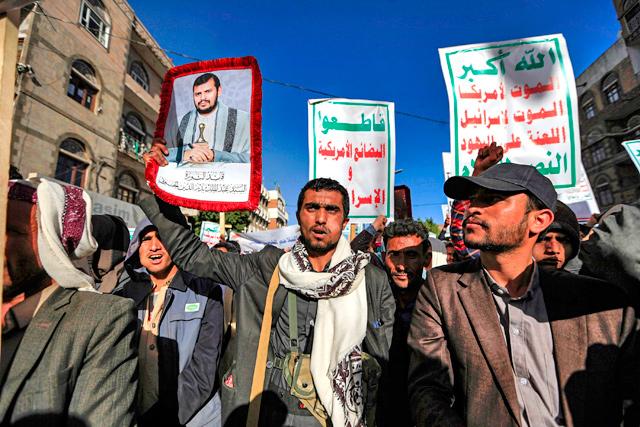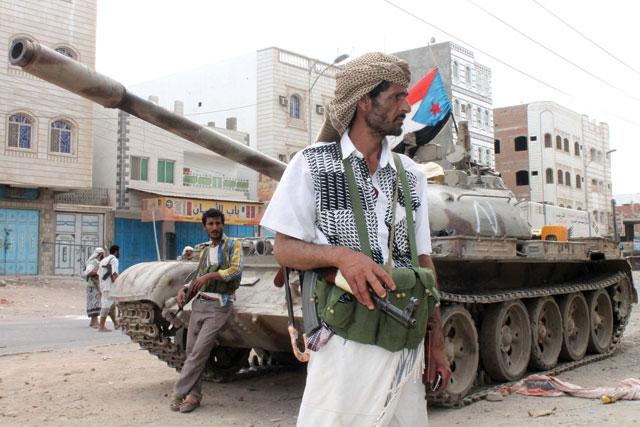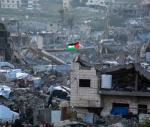You are here
Yemen’s crisis reflects arc of Arab Spring revolts
By AP - Oct 12,2014 - Last updated at Oct 12,2014
SANAA — Yemen's 2011 Arab Spring revolt began with a nucleus of young men and women, a mix of socialists, secularists and moderate Islamists. In the capital's "Change Square", they launched their sit-in protest, a dreamy and romantic movement seeking to end autocrat Ali Abdullah Saleh's 33-year rule and transform the poorest Arab nation into a democratic, modern society.
Nearly four years later, Yemen is in chaos. Shiite rebels have overrun the capital. Saleh is out of power, but remains powerful, with his loyalists infusing the political scene and the military. Al Qaeda’s branch in the country is carrying out deadly attacks in Sanaa. Attempts at real reform are in disarray.
The activists behind the initial uprising look back at what went wrong, and many of them point to a series of errors — starting when the Muslim Brotherhood's branch in the country, the Islah Party, moved in and dominated the protest movement. That turned the revolt into a power struggle between Saleh and the powerful, conservative Islamists. Now the Shiite Houthi rebels who swept into Sanaa last month say they did so to break Islah's hold.
“The revolution was taken in a different direction and used by Islah to negotiate with Saleh at the expense of its basic aspirations,” said Majed Madhaji, an activist involved early in the uprising and now a political analyst.
“There was an opportunity to correct Yemen’s political discourse and bring about its long-term recovery, but it was taken away. And look where we are now.”
It is a theme heard in many of the countries that saw pro-democracy uprisings against autocrats in 2011. In most, Islamists joined the revolts led by activists they had little common cause with. Because of their stronger organisation, they came to dominate the movements and emerged as the strongest players after the autocrats’ fall — only to prompt backlashes that threw the countries into greater turmoil.
Egypt’s 2011 uprising, for example, was engineered and led by secular and liberal youth groups. Islamists led by the Muslim Brotherhood then joined, and after the fall of Hosni Mubarak used their vast resources and organisational skills to win the country’s first democratic parliamentary and presidential elections.
But after only a year in office, president Mohamed Morsi was met by massive protests by Egyptians who accused his Brotherhood of trying to monopolise power. Then-military chief Abdel Fattah Al Sisi removed Morsi, but now his critics fear he is leading the country into even worse autocracy. Many activists in the original anti-Mubarak revolt grumble that if the Islamists had not sought to dominate, things would have turned out differently.
In Libya, what began as protests in a 2011 revolt devolved into an 8-month civil war that finally led to Muammar Qadhafi’s ouster and death but left the country in chaos with armed militias running rampant. Many of those militias are Islamic extremist groups. Meanwhile, the Brotherhood and other Islamists sought to dominate the previous parliament, and after losing recent elections they have tried to cling to power, setting up an alternative government.
Back in Yemen in 2011, the “innocent” days of the uprising under the youth activists lasted barely a month before Islah and its ally, Gen. Ali Mohsen Al Ahmar, commander of an elite armoured division with longtime links to armed Islamic extremists, joined.
The money of the Islamists and the might of the soldiers quickly overwhelmed the original activists. The number of protesters grew, the tents became bigger, an elaborate distribution network for food, water and money was set in motion and armed soldiers guarded the encampment. Soon after, the peaceful uprising became a footnote in street warfare between Saleh’s loyalists and Ahmar’s mutinying soldiers, with battles by rockets, mortars and machine-guns in Sanaa.
The uprising ended in late 2011 with the backroom dealing typical of Saleh’s rule. An accord mediated by Gulf nations and sponsored by Saudi Arabia and the United States forced Saleh to step down, but guaranteed him immunity from prosecution.
His ruling party was given half the seats in a new Cabinet, shared with the Islah Party and led by Saleh’s former vice president, Abed Rabbo Mansour Hadi. The deal also allowed members of his immediate family to retain their key positions in the military and security forces, effectively perpetuating the hold of Yemen’s traditional powers — Saleh, Islah and its allied militant militias, powerful tribal chiefs and the army.
The young revolutionaries went home with genuine change still a dream, not a reality.
“Yemen’s current problems are rooted in the lack of appetite for an inclusive and national discourse by the forces that emerged from 2011 revolution, like Islah,” said prominent analyst Mansour Hayel.
“Politics has taken a backseat and armed militias have replaced it,” he said. “We are looking at a future of bloody chaos.”
Since then, Saleh, remaining in Sanaa, played the role of a spoiler, using his loyalists to undermine Hadi and the transition process. The power of Saleh’s loyalists was matched only by that of Islah, which went on grabbing more and more key positions in the government, civil service and state institutions while continuing to build its armed militias.
Meanwhile, a key faction — the Shiite Houthi rebels — were marginalised, not given a single post in Hadi’s Cabinet. The rebel force had battled Saleh’s government six times in its strongholds north of the country since the mid-2000s. Since 2011, it has been fighting mainly with its top rivals — the conservative Sunnis of Islah’s militias and allied tribesmen.
Even as they fought, the Houthis and Islah were sitting at the same table along with other factions in a “national dialogue” led by Hadi, intended to map out the future of the country. The Houthis were particularly active in the dialogue, pressing proposals on establishing a secular system.
“The Houthis sat on the same table in a five-star hotel discussing Yemen’s future with Islah as their supporters fought each other,” said Sarah Jamal, a prominent activist and an icon of the 2011 uprising. “The dialogue often appeared oblivious to what was going around in the country, things that were changing conditions on the ground.”
Finally, after a year of work, the dialogue announced its plan, marketed in a nationwide campaign of TV ads and street billboards as a roadmap to Yemen’s future and prosperity, with political inclusion and socio-economic equality high on the list.
The Houthis say their Sept. 21 takeover of Sanaa is intended to rescue that plan, which they say Islah does not intend to implement. Hadi, as well, was slow in carrying out parts of the deal. Houthi fighters defeated Islah fighters in weeks of fighting, taking over much of the north of the country before sweeping into the capital.
Now the Shiite rebels have emerged as powerbrokers, forcing Hadi’s nominee for a new prime minister to withdraw this past week.
But Jamal and other activists fear that the Houthi takeover is only the start of further violence between the rebels and Islah.
“The Houthis’ defeat of Islah and its militias does not mean the end of Islah, there is a huge popular base loyal to the party that is awaiting the order to fight back,” she said.
Related Articles
As fighting raged at the First Armoured Division's base in central Sanaa, General Ali Mohsen Ah Ahmar arrived in a motorcade at the general staff headquarters and entered the building shouting "Treason! Treason!"
DUBAI — Death, destruction and starvation have obliterated the aspirations that propelled a 2011 uprising in Yemen, with the hopes of the co
Three weeks of Saudi-led air strikes in Yemen have led to defections of army units loyal to former president Ali Abdullah Saleh, military sources said, dealing a blow to his efforts to stage a comeback.


















